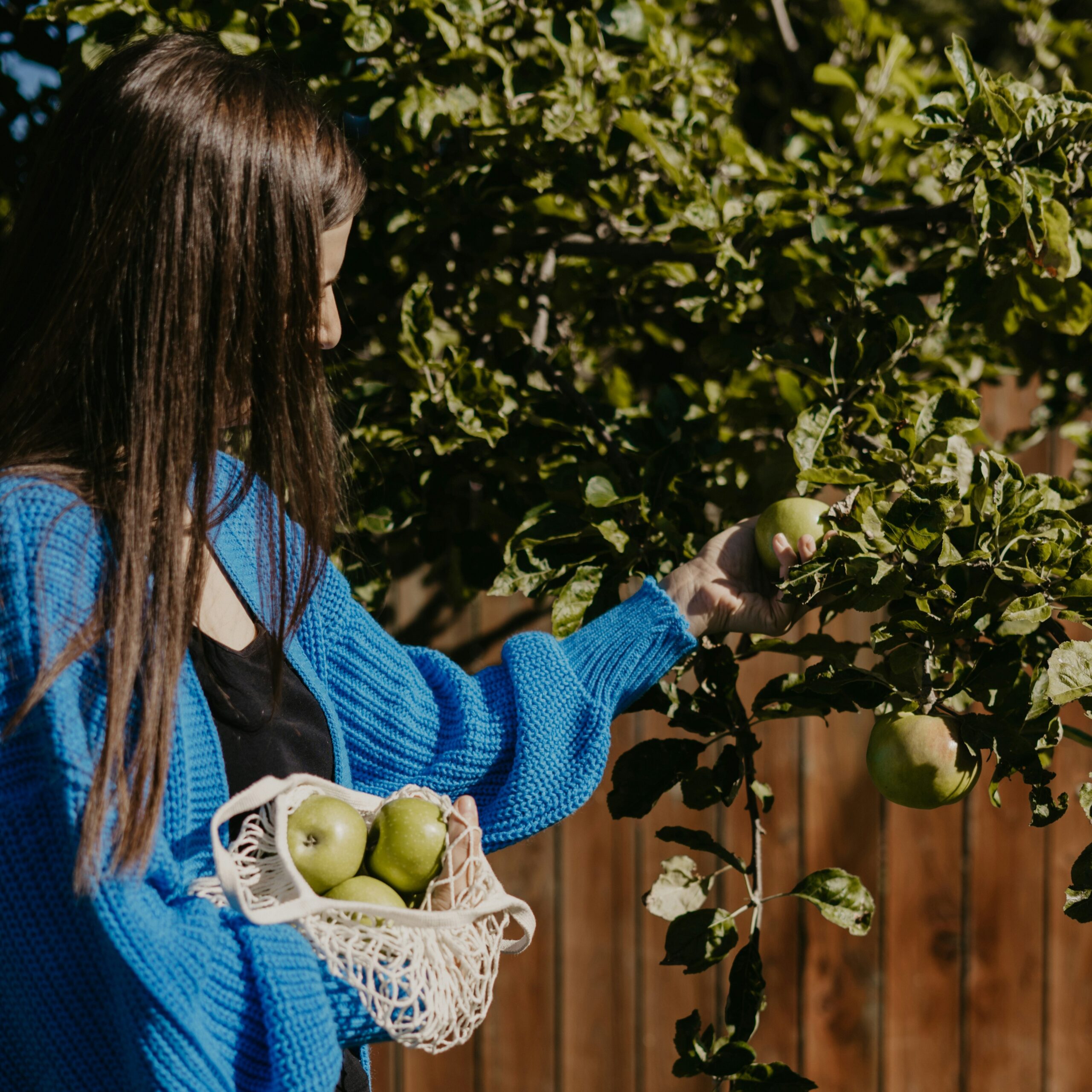Get the Most Out of Your Apple & Stonefruit Trees at Home

It’s a process that appears so simple – buy a fruit tree, plant it, and you’ll grow gorgeous fruit. But as most avid gardeners will know, that’s not the case. Growing fruit is a year-round marathon. It requires patience as you carry out certain activities in a particular order and at specific times while protecting your fruit from predators.
With an apple tree, for example:
- In winter, you need to prune the tree: Pruning will remove dead or diseased branches and ensure there’s space on the tree for high-quality fruit to grow, especially on healthy branches.
- In spring, you need to thin the fruit off the tree: Thinning allows for fruit to grow to its best size and quality. When a tree isn’t thinned, fruit can grow overcrowded, resulting in it being smaller and of lower quality. Thinning also allows for more sunlight and air penetration, which is beneficial for even ripening.
- In summer, you need to protect the tree: As flowers turn into fruit, there come pests, such as birds and possums, eager for their share. The best way to protect your tree is to cover it with secure netting. As a recommendation, netting should have a mesh size of 5mm x 5mm or less at full stretch, and should be white in colour, so that nocturnal animals can see and avoid the tree at night. There’s a range of options available, from netting the entire tree, to netting individual branches or even fruit pieces with bags and sleeves.
- In autumn, you need to pick the fruit: March to June is generally harvest season for apples, except for some early season varieties, such as SweeTango®. You’ll know an apple is ready to be picked when its foreground colour is vibrant, the flesh is a white or cream colour and the seeds have all turned brown. Unfortunately, the only way to know for sure is to pick a sample and cut it in half!!
Preparation is essential
Before you carry out the above seasonal activities, you need to prepare; specifically in terms of soil and location in your garden. For example, to grow fruit, you must plant your tree in the sun. This is especially true for apples and stonefruit, as they require full sunlight to grow and taste their best. Once you’ve chosen a spick-and-speck, sunny spot in your garden, next find soil that’s not so flash or nutrient-rich. You don’t need top-tier soil to grow top-tier fruit. In fact, if the soil is too good, the tree may grow very big, very fast, but won’t produce much or any fruit.
Another prep tip – for bare rooted trees – is to plant in winter when the tree has no leaves. This will avoid shocking the tree by transplanting it when it is actively growing. A dormant tree will slowly wake up from its winter slumber when the soil temperature increases in spring.
Stonefruit will begin harvest in summer from around December to March, and apples in autumn from around March to June. Which means if you’re planting in July, for example, no fruit will grow the following summer or autumn, giving you time to establish the tree. Come year two, you may see a few fruit pieces growing, but the tree will still be establishing itself. By year three, or the ‘third leaf’, you should expect to see the fruits of your labor.
What might prevent fruit from growing its best?
Lack of pollination: Pollination is an essential step. This is the process which turns blossoms into fruit, where pollinators, such as bees, collect and transfer the pollen grain from the male part of the flower, the stamen, to the female part, the stigma. However, if there’s not enough pollen, your tree won’t produce any fruit. That’s where having at least two trees planted near each other can help. This is specifically the case for apples, pears and plums, which all require pollinating partners. However, nectarines, peaches, and even citrus trees, are generally ‘self-fertile’, meaning they don’t need pollen from another source.
Disease: The most common diseases in fruit trees are curly leaves in stonefruit, and black spot or mildew in apples. If your tree’s leaf health is poor, it won’t grow good fruit or any at all. To manage disease, stay alert to your fruit tree drying out and watch for indications of disease so you can act quick. For example, one way to control fungal, which causes fruit to decay and turn soft and brown, is by using a copper fungicide, an element which will help prevent disease.
Having too much fruit on the tree: The reason fruit trees grow fruit is to reproduce, so it naturally wants to grow in abundance. However, if you leave all fruit on the tree, then it’ll only grow to the size of a ten-cent coin. This is where the importance of thinning comes in, so that the tree can carry the amount of fruit it’s capable of carrying. A good rule of thumb is that the circumference or diameter of the trunk will usually dictate how many pieces of fruit should be kept on the tree.
The most important thing to remember: Growing a fruit tree is easy. Really, you don’t have to do anything but put it in the ground. But growing fruit on the fruit tree requires time and work in each season. Although, it’s always worth it in the end, for that first season when you finally see beautiful fruit growing in your own garden!!!!
Learn more about growing fruit at home from Montague’s Chief Innovation Officer, Rowan Little, and Andrew Smith, expert at Warners Nurseries. Running at the Melbourne International Flower & Garden Show, these workshops will cover:
- How to establish your garden: plant selection, soil preparation & maintenance
- Planning for small and compact gardens
- Dealing with pests & disease
- Ensuring your garden grows exceptional fruit for years to come
Reserve your free ticket here.



























